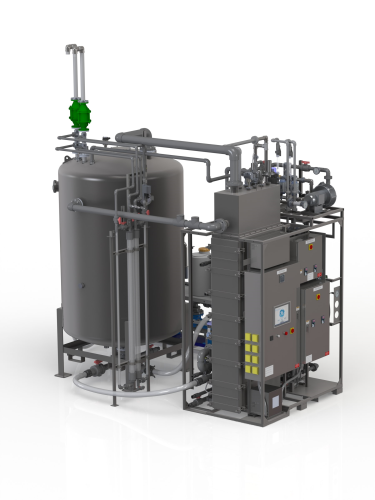
GE has introduced its latest in membrane-based wastewater treatment technology, combining anaerobic digestion technology with its ZeeWeed* 500 membranes to create anaerobic membrane bioreactor (AnMBR). As industrial customers seek greater water reuse, while facing more stringent discharge limits, AnMBR could offer lower costs, better performance and the ability to generate renewable energy from industrial wastewater.
GE’s new technology is a solution for industrial wastewater with high biochemical oxygen demand and chemical oxygen demand concentrations that result in higher aerobic treatment operational expenses. GE claims that its AnMBR provides reduced energy consumption, energy recovery and reduced sludge production both economically and reliably.
Biological process
Anaerobic digestion is a biological process in which microorganisms break down biodegradable material in the absence of oxygen. One of the end products is biogas, which can be combusted to generate electricity and heat. Advantages of anaerobic treatment include energy savings by not requiring oxygen, reduced sludge production and reduced footprint. However, the traditional anaerobic processes have disadvantages such as lesser effluent quality, process sensitivity, slow biomass growth rate, difficulty retaining methanogens and long-time or difficult-to-settle sludge.
By combining anaerobic digestion and ZeeWeed membrane technology, GE has solved the issues associated with traditional anaerobic processes. GE’s AnMBR separates solids retention time from hydraulic retention time for a more robust biological process, retaining methanogens in anaerobic reactor, increasing methane production with no suspended solids in permeate and improving final effluent quality.




